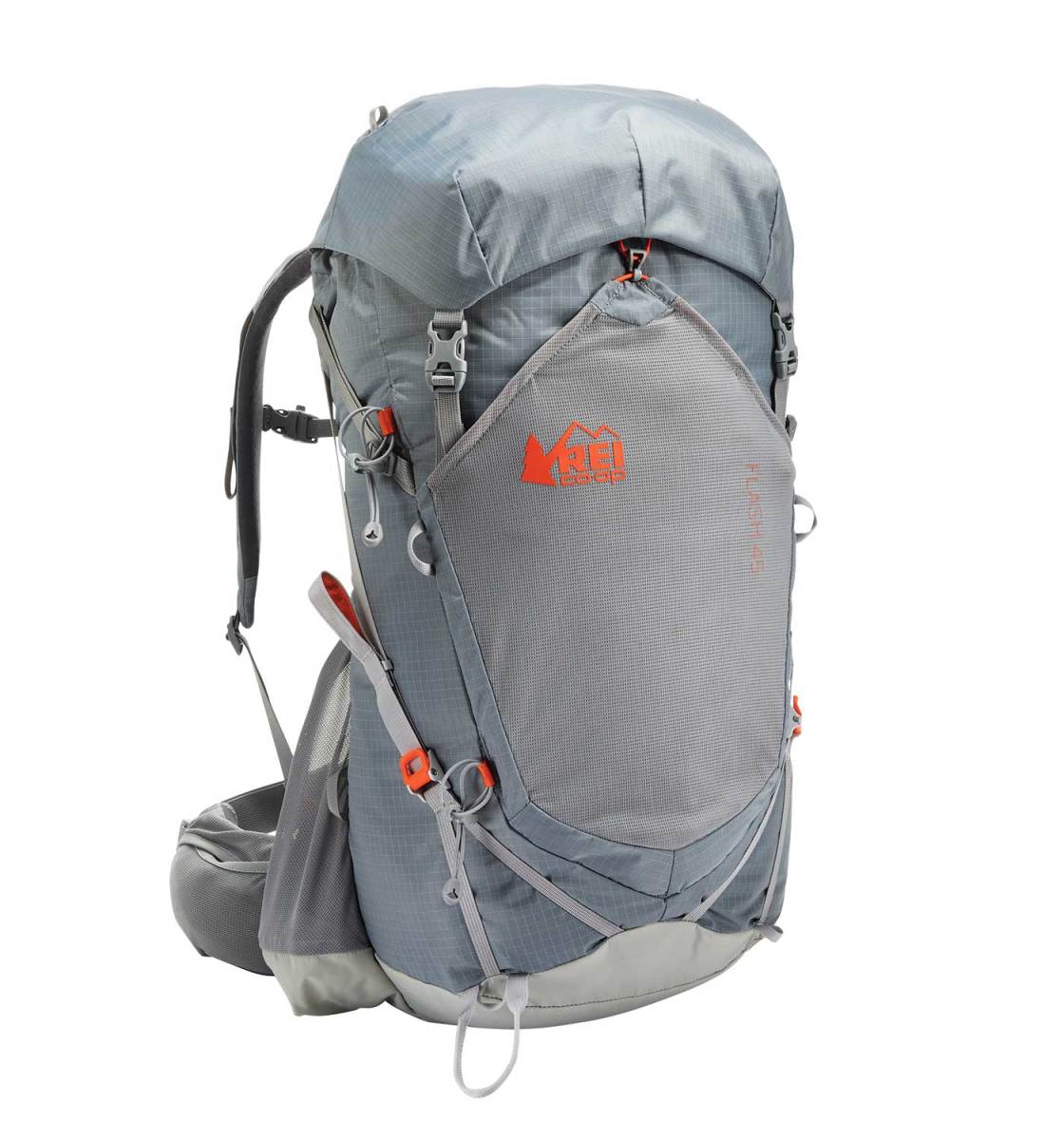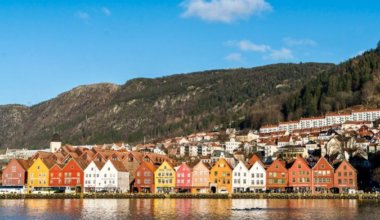
From beautiful Paris, to smoke filled coffeeshops in Amsterdam, to Oktoberfest, to the beaches of Greece, there s so much to see in Europe that you won’t have any problem filling your time or coming up with suggested activities whether you are backpacking Europe for a few months or just spending a few weeks there on a vacation.
The continent holds wonderful beaches, historical architecture, amazing wine, and wonderful people. Every country is incredibly different than the next.
I first went to Europe when I was backpacking there in 2006. I was hooked. I’ve been visiting ever year since then, have run tours through the continent, and even wrote a book to Europe travel. I am in love with Europe.
There is a lot of diversity and so many ways to get around and things to do in Europe that I wrote this Europe travel guide to help you travel better on your visit. I know how complicated figuring out rail passes, finding hostels, getting around, and finding the best stuff to do there can be.
This guide will give you an overview of Europe travel and I’ve written extensive travel guides to each of the countries on the continent so you can travel better, longer, and smarter.
So sit back and enjoy this backpacking Europe guide!
Table of Contents
Click Here for Country Guides

Europe
Top 5 Things to See and Do in Europe

1. The Greek Islands

2. Ride the rails

3. Get lost in Paris

4. Go city hopping

5. Hit the Swiss Alps
Other Things to See and Do in Europe
1. Go to Amsterdam
There s more to the city than just coffee shops and red lights. I love Amsterdam so much, I lived here for a short period of time in 2006. Cobblestone and brick streets weave around lovely canals. Amsterdam has a vibrant art and music scene and friendly locals willing to help you out. Make sure you get out of the center into the Jordaan and Oost with their wonderful outdoor cafes.
2. Hang out in Barcelona
Barcelona is a city that goes 24 hours a day, 7 days a week and could give NYC a run for the 'city that never sleeps' title. Be prepared for late-night dinners and parties til dawn. Barcelona knows how to get down. Besides a great food and nightlife scene, there is a wonderful beach, Gaudi architecture, and history dating back to Roman times.
3. Visit Berlin
Hip and trendy Berlin is an energetic destination. It is one of Europe s most affordable capital cities with a vibrant music and art scene and a growing foodie movement. There is a ton of cheap Middle Eastern food. Be sure to check out the history museum it s one of the best in the world.
4. Drink beer at Oktoberfest
Oktoberfest is a must for anyone going to or near Germany at the end of September. There are people from all over the world, lots of beer, excitement, music, and wild fun. Watching thousands of people sing together, toast and party atmosphere make you feel good about the world. (Or maybe that s just the beer?)
5. Experience London
Get a taste of English culture in diverse London. The museums here are some of the best in the world (and free), plus the city offers great food, and the pub culture is wonderful. Head to Brick Lane for some amazing Sunday food markets. I prefer Paris to London, but there is something sophisticated and fun about London. Just watch those pints London is not a cheap destination.
6. Hang out in Scandinavia
My favorite region in Europe is Scandinavia. The quality of life here is high, the people beautiful and friendly, the cities clean and historic. True, this area of Europe is not cheap, but there are plenty of ways to reduce your expenses. Don t let the high prices scare you away. Highlights for me include Copenhagen, Stockholm, Gotland, Norway s fjords, and Lapland in Finland.
7. Get enchanted in Prague
Prague is a beautiful city with amazing history. It s a cheap destination and during the weekends it heaves with people enjoying the bars, cheap beer, and delicious food. It is one of the most beautiful and picturesque cities I ve seen.
8. Wine and dine along the French Riviera
Have fun in the sun, hob nob with the rich and famous, and sail (or gaze at) gigantic yachts. You can pretend to live the high life for a little bit. Nice is nice and Monaco is just a skip away.
9. Enjoy the great outdoors in Interlaken
Located in the beautiful mountains of Switzerland, Interlaken is a great place to unwind with some good hikes, hot chocolate, and outdoor sports. It s a good alternative from all the cities and museums you constantly see. Interlaken is also a popular party destination for backpackers and other young travelers.
10. Explore Rome
This thriving historical city has amazing food and nightlife. Moreover, with its tiny little streets to wander through (you can t walk two feet without stumbling over a ruin), Rome is a history buff s dream. Visit the Trastevere area for a taste of 'local' Rome and chill bars. It s my favorite area in the city.
11. Hike around the Cinque Terre
Cinque Terre is my favorite part of Italy. These five beautiful cliff side towns are perched near warm waters and beautiful olive and grape groves. You ll find some wondrous and strenuous hikes in these hills. For a real challenge, take trail #8. Or just walk the coastline for something less difficult.
12. See Krakow
Krakow looks like it stepped out of a medieval postcard. It s even nicer than Prague! It s a hip, trendy, and youthful city as it is the center of education in Poland. You have a lot of university students here. Most travelers come to party here (the vodka is cheap) but try to enjoy the city s history and food besides just the bars. Auschwitz concentration camp is also close by.
13. Visit the ruin bars in Budapest
The coolest nightlife in all of Europe is found in Budapest. These bars are built in abandoned buildings and lots and feature funky art installations and decor. They are amazing, fun, and great places to meet locals. People of all ages flock here. If you skip these bars, you miss out on one of most unique things about the city.
14. Explore Cornwall
The best part of England is outside London, and, unfortunately, not a lot of people leave London. Head west to the area of Cornwall for cheaper prices, friendlier locals, more natural beauty, great hiking, rolling hills, small towns, and overall what you think of 'traditional England.'
15. Walk the Camino
El Camino de Santiago (The Way of Saint James) is an ancient pilgrimage route that stretches from France all the way across Spain. It is an 800km trail that winds through some incredible terrain, usually taking over a month to complete. Of course, you can just walk a section of it if you don t have the time.
16. Throw tomatoes during La Tomatina
By far my favorite festival, this giant food fight happens during the last Wednesday of August in Bunol, Spain. For about an hour, everyone throws tomatoes at each other and the streets become ankle deep in tomato juice. Afterward, everyone walks down to the river, cleans off, and then heads to the town square for sangria and music.
17. Find more than Dracula in Romania
Not a lot of people visit Romania but this is off the beaten path country in Eastern Europe has undiscovered medieval towns, gorgeous beaches on the Black Sea, and incredible hiking all at dirt cheap prices. I spent $30 USD per day here and experienced the country without any of the crowds of central and western Europe!
18. Drink fine whisky in Islay
Whisky has a long history on Islay. It s been made there since the 16th century — first in backyards and then, starting in the 19th century, in big distilleries. Over the years, whisky from the island came to be considered a specialty and was used to flavor a lot of other blends on the mainland. My visit here was amazing and, even if you don t like whisky, there are tons of good hikes and walks throughout this magnificent island.
19. Explore Iceland
Iceland is a magical country. You ll find majestic waterfalls and hidden hot springs around every corner, with sweeping vistas unlike anywhere else in the world.With whale watching in the summer and the northern lights in the winter, there really is no bad time to visit!
For more information on specific countries, check out these guides!

Europe Travel Costs
Accommodation – If you’re looking to find a budget-friendly place to stay in Europe, you re in luck! Accommodation pricing varies, and with my help, you can find the perfect place to stay, for the right price. Hostel dormitory rooms cost between 18-40 USD (20-45 EUR) per night, depending on the room s size and the popularity of the hostel. I stayed in a 6-bed dorm in Berlin for 15 EUR (17 USD), while the same one would have cost me around 32 EUR (36 USD) in Paris. A room in Paris will cost on the higher end and a room in cheaper Athens will cost on the lower end. Campsites cost between 9-15 EUR (10-17 USD) per night per person for a tented space.
In Eastern Europe, hostel dorm rooms cost between 6-15 EUR (7-18 USD) per night depending on the size of the dorm room and popularity of the hostel. The further east you go, the cheaper it gets. Expect to pay around 27-55 EUR (31-62 USD) per night for a private room that sleeps two.
In Scandinavia, hostel dorm beds will cost between 22-42 EUR (25-48 USD), while private rooms are 70-85 EUR (79-96 USD). Budget hotel rooms start at around 60 EUR (68 USD).
Most hostels offer free linens, free WiFi, and a lot offer free breakfast but it s important to check specific websites for exact amenities. Rooms that sleep two start at 27 EUR (31 USD) per night in a 2-star hotel. These hotels come with amenities like breakfast, private bathrooms, and WiFi. Airbnb is also available throughout Europe. You can find shared rooms starting around 10 EUR (11 USD) per night and entire homes (including studio apartments) starting around 24 EUR (27 USD).
Food – Finding places to eat within your budget is easier than you think. Throughout Western Europe, you can find small shops where you can get sandwiches, slices of pizza, or sausages for between 4-7 EUR. You find these shops are most often found in train stations, bus stations, and main pedestrian areas. These small sandwich shops offer cheap food alternatives that can have you eating on between 9-15 EUR (10-17 USD) per day. Restaurant meals cost around 13-25 EUR (15-28 USD) for a main dish and drink. Food is much cheaper in the east than in the west. Even if you are eating out for all your meals, you still get by on as little as 9 EUR (10 USD) per day. You can cook your own food for around 65 EUR (74 USD) per week.
You can money by shopping for food at discount supermarkets like Profi, Lidl, Aldi, and Penny Market.
If you eat out, do so at lunch and get the prix-fixe menu (two-course or three-course set menu). Restaurants offer this set menu during lunch, and with prices between 10 20 EUR (11-23 USD), it s a way better deal than the regular dinner menu! You can also get affordable lunches at outdoor markets. So many European cities have huge fresh food markets throughout town.
If you want to save big money on meals, head to one of the markets, pick up some cheese, wine, bread, meats, or anything else, and go to the park for a picnic. (Or grab a sandwich for later!) You ll find the locals doing the same thing, and it s one of the cheaper ways to get a true taste of local food.
Activities – Wine tours will be your priciest activity at around 90 EUR (102 USD) per day. Going up the Eiffel Tower will cost between 7-17 EUR (8-19 USD) and visiting the Versailles Palace and Gardens will cost 25 EUR (28 USD). The Tower of London is about 28 EUR (32 USD). Bike tours and river cruises can cost 24-40 EUR (27-45 USD). Most museums and tours start at around 14 EUR/16 USD (it s cheaper of course in the east). Full day tours cost between 35-100 EUR (40-114 USD). Prices vary drastically per country so it s hard to give a good general cost. See country information for more details.
Backpacking Europe Suggested Budgets
Prices for Europe travel vary greatly depending on how far north, east, south or west your travel.
If you stick to the budget accommodations, food, and tours listed here and ignore all my tips on saving money, you ll need about $75 USD per day in Western Europe, $45 USD in Eastern Europe, and about $100 USD in Scandinavia. Those numbers refl ect a traveler who stays in hostels, doesn t cook meals, eats mostly cheap food, drinks, and visits a lot of attractions. This is your typical backpacker budget. You aren t going to have a fancy time, but you aren t going to want for anything either.
However, by getting tourist cards and rail passes, avoiding flights, occasionally couch-surfing, and cooking some meals, you can travel a lot cheaper.
In Western Europe, you can spend between $50 USD and $60 USD per day. In Eastern Europe, which is already cheap, by implementing my tips, you can travel on around $35 USD per day. In Scandinavia, there are so few ways to save that the cheapest you can do is around $70 USD per day.
On the ultra cheap, if you were to use Couchsurfing every day (or even camped), cooked all your meals, didn t drink, and saw a minimum of sights, you could do Western Europe on $35 USD per day, Eastern Europe on $20 USD, and Scandinavia on $50 USD. Th at would require you to take a train or a bus or hitchhike everywhere, skip most museums, and limit how often you go out.
Generally, the suggested daily budget for Europe is 40-70 EUR / 42-75 USD.
Europe Travel Guide: Money Saving Tips
Individual country guides have more specific information but here are some general tips help you backpack Europe on a budget:
- Picnic – This continent has a lot of little tiny shops where you can be pre-made sandwiches or ingredients to make your own. Buy some food, eat outside, and watch the city go by. It s a much more enjoyable and cheaper way to eat.
- Couchsurf – Hostels can add up really quick. If you don t have any friends with whom you can stay, consider using the service Couchsurfing, which lets you connect with locals who will let you stay with them for free.
- Eat local and cheap – Not into picnicking? That s ok, there are other ways to save money on food. Eat at local sandwich shops, pizza parlors, Maoz, Wok to Walks, outdoor street vendors, and the like. Avoiding restaurants and eating at a lot of the local 'grab n go' places will give you a taste of the local cuisine at a much cheaper price.
- Camp in a garden – A very good camping service specific is Campspace, which allows you to pitch a tent in someone s backyard for free or a nominal fee (around 4-10 EUR). This is a new service that started in 2010 but more and more people are signing up for it each day. All of the garden owners have profiles that tell you what services and facilities they offer.
- Take the bus – Budget bus companies like Flixbus can take you across the continent for cheap. It isn t glamorous, but for tickets starting at 5 EUR (6 USD) you really can t complain!
- Get a Rail Pass – Eurail Passes have saved me hundreds of dollars when I traveled around. If you are traveling far distances and through many countries, they are a great deal.
- Take the free city tours – One of the great things about Europe is that you can find free walking tours in all the major cities. They can be a great way to see the city attractions, take in some history, and learn your bearings without spending any money.
- Plan accordingly – Transportation can eat into your budget. Traveling costs money. A good way to save money is to avoid moving in weird directions. Move in a straight line, and avoid doubling back and avoid paying too much for transportation.
- Fly cheap – If you know where you are going and a train won t do, try to book flights early. You can often get round trip fares as little as 5 EUR (6 USD) from many of the discount airlines that fly through Europe like Ryanair or Easyjet.
- Drink less – Those 5 EUR (6 USD) beers really add up. Hit happy hour or pick and choose when you party. Hostel bars are a good place to get cheap drinks or buy your alcohol at the supermarket. Partying your way across the continent will destroy your bank balance in no time.
- Get a city tourist card – Local tourism offices issue a tourist card for all their attractions, tours, and restaurants. This card gives you free entry and substantial discounts on all the attractions and tours in a city, free local public transportation (a huge plus), and discounts at a few restaurants and shopping malls. They save a ton of money. If you plan on doing a lot of sightseeing, get one of these cards.
- Have an ISIC Card – To save 20-50% on the cost of admission to museums and other tourist attractions, be sure to present a valid student card. The ISIC is typically accepted in places where a foreign student ID is not.
- Rideshare – If you re flexible in your schedule, use the ridesharing service BlaBlaCar and catch rides with locals between cities (or countries). I used this service in Switzerland and, not only did I save a lot of money, but I got to meet interesting people to and learn about local culture and life. Drivers are verified and it s perfectly safe (though sometimes rides don t show up, which is why you need to be flexible).
Where to Stay in Europe
Looking for the best hostel in Europe? Check out this list of favorites (and for an even deeper selection of favorites, visit our specific city and country guides for even more options):
- The Bulldog (Amsterdam, The Netherlands)
- Central Station (Kiev, Ukraine)
- City Backpackers (Stockholm, Sweden)
- Euphoria Hostel (Tallinn, Estonia)
- The Flying Pig (Amsterdam, The Netherlands)
- Francescos (Ios, Greece)
- Gallery Hostel (Porto, Portugal)
- Generator Hostel (Copenhagen, Denmark)
- Generator Hostel (Dublin, Ireland)
- Goodnight Hostel (Lisbon, Portugal)
- Greg and Tom’s Party Hostel (Krakow, Poland)
- Hostel Blues (Bratislava, Slovakia)
- Hostel Mostel (Sofia, Bulgaria)
- Kabul (Barcelona, Spain)
- Kismet Dao (Brasov, Romania)
- Ostello Archi Rossi (Florence, Italy)
- Skanstull (Stockholm, Sweden)
- Snuffel Backpacker Hostel (Bruges, Belgium)
- Sophie’s Hostel (Prague, Czech Republic)
- St. Christopher’s Inn (Barcelona, Spain)
- Tallinn Backpackers (Tallinn, Estonia)
- Wombats (Berlin, Germany)
- Wombats (Vienna, Austria)
- The Yellow (Rome, Italy)
For my favorite hostel suggestions, here’s a list of the 20 best hostels in Europe!
How to Get Around Europe
A key part of backpacking Europe is choosing how you re going to travel to your next destination. Transportation around most European cities by local tram, subway, or bus is typically under 2 EUR (2.30 USD) for a one-way ticket. Intercity transportation varies widely.
Here’s a breakdown of each option:
Budget Airlines – Budget airlines are so prolific that competition helps keep fares low. You can often find tickets where the fare is just 5 EUR (6 USD) round-trip! Companies like Transavia, EasyJet, Ryanair, Wizz, and Vueling offer mind-blowingly cheap flights throughout Europe.
Book at least a month early to scoop up great deals.
Make sure that the airport they fly into isn t too far out of your way (transportation from the secondary airport sometimes negates the savings from using the budget airline itself).
Also, keep in mind that you’ll have to pay to check your baggage on these cheap flights. It costs about 25-39 EUR (28-44 USD) for one checked bag. If you wait to pay for your luggage at the gate you’ll end up paying almost double.
Buses – Buses are not quite as comfortable as Europe s trains, although certain lines do have great amenities (like roomy seats and Wi-Fi). They also take a lot longer than trains. Buses are also not the most efficient way to travel around the continent, but they re certainly dependable and reliable, and the cost the least. You can find last minute rides for as little as 5 EUR (6 USD). A route from Berlin to Munich is about 25 EUR (28 USD), while Paris to Bordeaux is 13 EUR (15 USD). Longer routes, like Amsterdam to Copenhagen, start at around 56 EUR (64 USD).
Each country has its own national bus service, but some lines will also take you long distances internationally. Megabus (UK), Eurolines, Flixbus, and Busabout are some of the most popular companies.
Trains – Train travel is a great way to see Europe, albeit sometimes not the most cost effective or efficient. Most European rail companies allow customers to purchase tickets online in advance, which is recommended for faster trains or popular trains like France s TGV and Germany s Deutsche Bahn. Intercity train prices vary wildly from country to country and depending on whether you take the slow train or a high-speed train.
For example, a high-speed train from Berlin to Munich costs around 190 EUR (216 USD), Bordeaux to Paris is about 95 EUR (108 USD), and Madrid to Barcelona is about 150 EUR (170 USD). Non-high speed trains and other intercity lines are a lot cheaper, generally costing about 40-50% the price of high-speed trains. Eastern Europe inter-country trains usually cost between 45-100 EUR (51-114 USD) when the ticket is booked last minute. Short trains rides of 2-3 hours within countries cost about 27 EUR (31 USD).
You may also want to consider getting a EuRail Pass, which allows travelers to explore Europe by providing a set number of stops in a specific time period. These passes are continent-wide, country specific, or regional.
Ride sharing/Car sharing – If you re schedule is flexible, use a ridesharing service and catch rides with locals between cities (or countries). Drivers are verified and it s perfectly safe. BlaBlaCar is the most popular.
Hitchhiking – Hitchhiking in Europe is very safe, but it’s not for everyone. Hitching is quite common around the continent, and I ve met a number of travelers who have done it (I, myself, traveled this way in Bulgaria and Iceland). Some countries will be very supportive (Romania, Iceland, Germany) while others may be a bit more time consuming (Italy, Spain). HitchWiki is the best website for hitchhiking info.
Here are my suggested articles for how to get around Europe:
When to Go to Europe
There’s no wrong time to visit Europe! Peak season is summer time when Europe gets crazy crowded. Prices increase during this time as well. But the overall atmosphere and weather is great during this time, so it’s still worth visiting during peak season.
Shoulder season is spring and fall (March to May and September to October, respectively). It’s still warm during this time but there aren’t as many crowds and prices are cheaper. This is my favorite time to visit Europe – the weather is good, the crowds fewer, and the prices lower.
Winter is from November to February. It gets cold, even as far south as it gets (like Greece). On the other hand, the Christmas season has a fantastic season – you’ll find Christmas markets and festivals galore! Daylight hours are shorter north, however, especially in Scandinavia.
How to Stay Safe in Europe
Due to a high-profile terrorist attacks and riots across Europe and ongoing media coverage, I often get asked if it’s safe to travel to Europe. Europe is no more dangerous (probably even less so) than any other place in the world. I wrote a whole article about how Europe is safe to visit right now. Check it out.
Europe is very safe for backpacking and solo traveling but there are scams and petty crime you should watch out for. Guard your stuff in crowded places and watch out for people offering you stuff. (Read about these 14 Major Travel Scams to Avoid!)
Always trust your gut instinct. If a taxi driver seems shady, stop the cab and get out. If your hotel is seedier than you thought, get out of there. You have every right to remove yourself from the situation. Make copies of your personal documents, including your passport and ID. Forward your itinerary along to loved ones so they ll know where you are.
And, remember, if you wouldn’t do it at home, don’t do it here.
The most important piece of advice I can offer is to purchase good travel insurance. Travel insurance will protect you against illness, injury, theft, and cancellations. It s comprehensive protection in case anything goes wrong. I never go on a trip without it as I ve had to use it many times in the past.
Europe Travel Guide: The Best Booking Resources
These are my favorite companies to use when I travel to Europe. They are included here because they consistently find deals, offer world-class customer service and great value, and overall, are better than their competitors. They are the ones I use the most and are always the starting points in my search for travel deals.
- Momondo – This is my favorite booking site. I never book a flight without checking here first.
- Skyscanner – Skyscanner is another great flight search engline which searches a lot of different airlines, including many of the budget carriers that larger sites miss. While I always start with Momondo, I use this site too as a way to compare prices.
- Airbnb – Airbnb is a great accommodation alternative for connecting with homeowners who rent out their homes or apartments.
- Hostelworld – This is the best hostel accommodation site out there, with the largest inventory, best search interface, and widest availability.
- Take Walks – This day tour company operates in Italy, France, Spain, the UK, and Greece. What makes them so good is they get you inside access to attractions and places you can t get elsewhere. Their guides rock too!
- Fat Tire Tours – For bike tours (as well as food tours and cooking classes), check out Fat Tire Tours. They have fun, intereactive tours led by expert local guides. You’ll get to see all the main sights without breaking the bank!
- Couchsurfing – This website allows you to stay on people s couches or spare rooms for free. It s a great way to save money while meeting locals who can tell you the ins and outs of their city. The site also lists events you can attend to meet people (even if you re not staying with someone).
- Priceline – One of my favorite hotel sites because it allows you to bid on hotels and can lower the cost of your hotels by as much as 60%. If you re looking at staying a big hotel, this site should be where you go first.
- Booking.com – The best all around booking site that constantly provides the cheapest and lowest rates. They have a no money down policy, great interface, and the widest selection of budget accommodation. In all my tests, they ve always had the cheapest rates out of all the booking websites.
- Rail Europe – If you are going to Europe and taking a lot of high speed or long distance trains, get a rail pass. I ve used a rail pass three times and saved hundreds of dollars each time. The math just works.
- ItaliaRail – A great resource to use when planning your trip via train around Italy is ItaliaRail. You can compare prices, routes, and schedules and save up to 60% on your tickets.
- Intrepid Travel – If you want to do a group tour around Europe, go with Intrepid Travel. They offer good small group tours that use local operators and leave a small environmental footprint. If you go on a tour with anyone, go with them. And, as a reader of this site, you’ll get a discount when you click the link!
- Grassroots Volunteering – For volunteering, Grassroots Volunteering compiles a list of good local volunteer organizations that keep the money within the community.
- Go Today – Great website showcasing highly discounted last-minute tours and hotels. Great for the last-minute planner.
- The Man in Seat 61 – This website is the ultimate guide to train travel anywhere in the world. They have the most comprehensive information on routes, times, prices, and train conditions. If you are planning a long train journey or some epic train trip, consult this site.
- Rome 2 Rio – This website allows you to see how to get from point A to point B the best and cheapest way possible. It will give you all the bus, train, plane, or boat routes that can get you there as well as how much they cost.
- FlixBus – German based Flixbus has routes between 20 European countries with prices starting as low 5 EUR (6 USD)! Their buses include WiFi, electrical outlets, and up to three 3 free bags.
- Bla Bla Car – BlaBlaCar is a ridesharing website that lets you share rides with vetted local drivers by pitching in for gas. You simply request a seat, they approve, and off you go! It s a cheaper and more interesting way travel than by bus or train!
- World Nomads – I buy all my travel insurance from World Nomads. They have great customer service, competitive prices, and in-depth coverage. I ve been using them since I started traveling in 2003. Don’t leave home without it!
GO DEEPER: Nomadic Matt’s In-Depth Budget Guide to Europe!
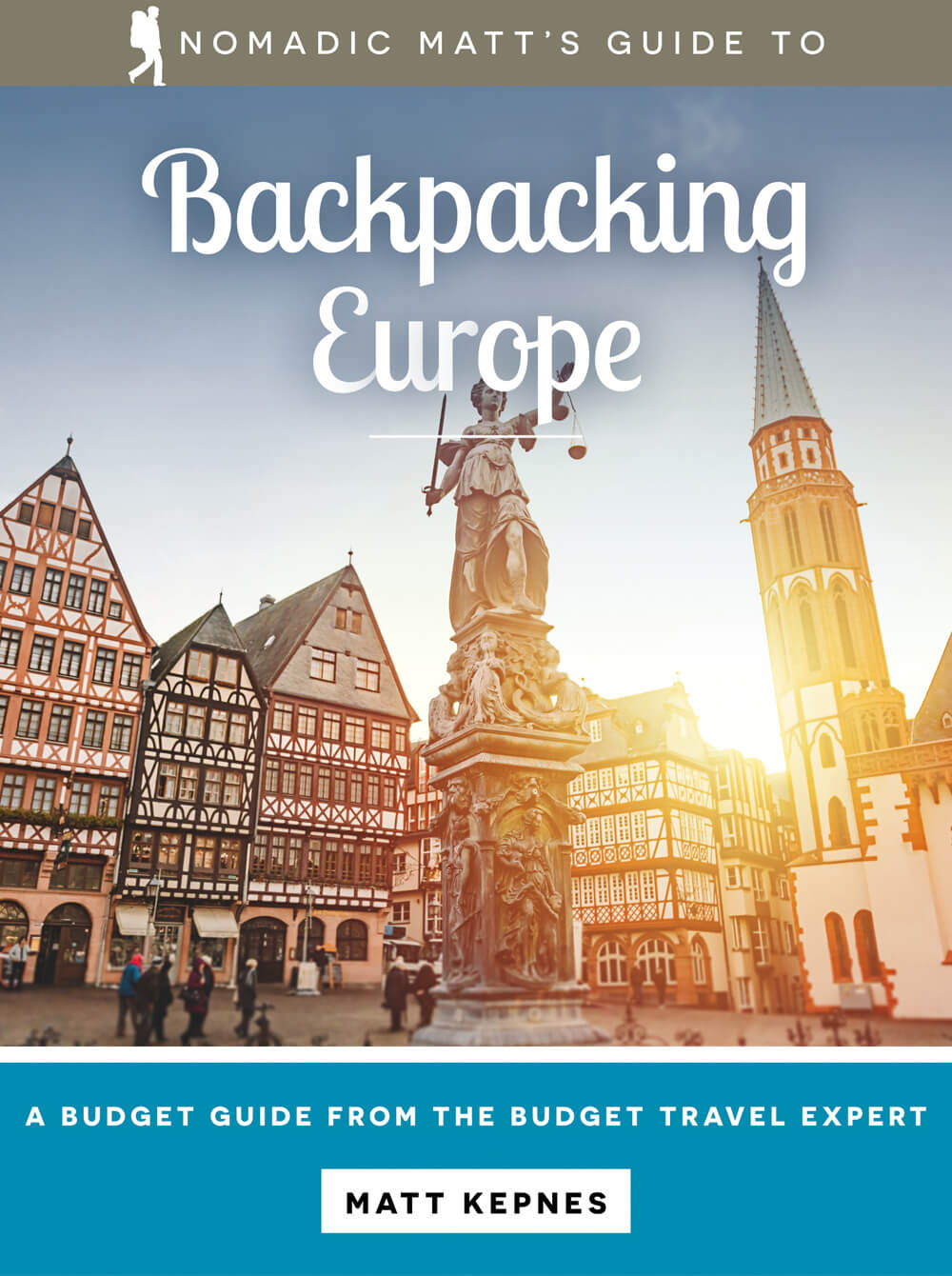 There’s a lot of free information online but do you want to spend days searching for information? Prob not! That’s why guidebooks exist.
There’s a lot of free information online but do you want to spend days searching for information? Prob not! That’s why guidebooks exist.
While I have a lot of free tips on Europe, I also wrote an entire book that goes into great detail on everything you need to plan a trip here on a budget! You’ll get suggested itineraries, budgets, even more ways to save money, my favorites restaurants, prices, practical information (i.e. phone numbers, websites, prices, safety advice, etc etc), and cultural tips.
I ll give the insider view of Europe that I got from years of traveling and living here! The downloadable guide can be used on your Kindle, iPad, phone, or computer so you can have it with you when you go.
Europe Gear and Packing Guide
If you’re heading on the road and need some gear suggestions, here are my tips for the best travel backpack and for what to pack!
The Best Backpack for Travelers
Size: 45-47L
Straps: Thick and cushy with compression technology that pulls the pack s load up and inwards so it doesn’t feel as heavy.
Features: Removable top lid, large pocket at the front, hydration compatible, contoured hip belt
If you want something different, refer to my article on how to choose the best travel backpack for tips on picking a pack and other backpack suggestions.
What to Pack for Your Trip
Clothes
- 1 pair of jeans (heavy and not easily dried, but I like them; a good alternative is khaki pants)
- 1 pair of shorts
- 1 bathing suit
- 5 T-shirts
- 1 long-sleeved T-shirt
- 1 pair of flip-flops
- 1 pair of sneakers
- 6 pairs of socks (I always end up losing half)
- 5 pairs of boxer shorts (I’m not a briefs guy!)
- 1 toothbrush
- 1 tube of toothpaste
- 1 razor
- 1 package of dental floss
- 1 small bottle of shampoo
- 1 small bottle of shower gel
- 1 towel
- Deodorant
Small Medical Kit (safety is important!!!)
- Band-Aids
- Hydrocortisone cream
- Antibacterial cream
- Earplugs
- Tylenol
- Hand sanitizer (germs = sick = bad holiday)
Miscellaneous
- A key or combination lock (safety first)
- Zip-lock bags (keeps things from leaking or exploding)
- Plastic bags (great for laundry)
- Universal charger/adaptor (this applies to everyone)
- LifeStraw (A water bottle with a purifier)
Female Travel Packing List
I’m not a woman, so I don’t know what a woman wears, but Kristin Addis, our solo female travel guru, wrote this list as an addition to the basics above:
Clothing
- 1 swimsuit
- 1 sarong
- 1 pair of stretchy jeans (they wash and dry easily)
- 1 pair of leggings (if it’s cold, they can go under your jeans, otherwise with a dress or shirt)
- 2-3 long-sleeve tops
- 2-3 T-shirts
- 3-4 spaghetti tops
- 1 light cardigan
Toiletries
- 1 dry shampoo spray & talc powder (keeps long hair grease-free in between washes)
- 1 hairbrush
- Makeup you use
- Hair bands & hair clips
- Feminine hygiene products (you can opt to buy there too, but I prefer not to count on it, and most people have their preferred products)
For more on packing, check out these posts:
Europe Travel Guide: Suggested Reading
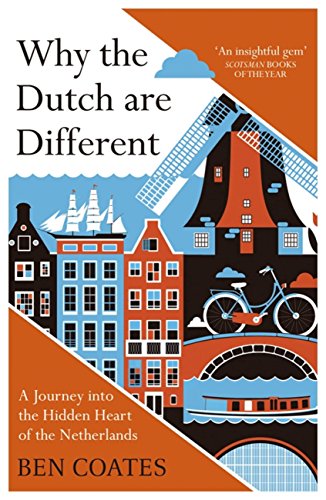 Why the Dutch Are Different, by Ben Coates
Why the Dutch Are Different, by Ben Coates
Ben Coates got stranded at Schiphol Airport, where he called a Dutch girl he’d met a few months earlier and asked if he could stay over the night. He never left. Fascinated by his adopted home, this is a travel book wrapped in a history book wrapped in a memoir. It’s also a look at modern Dutch culture and society, as well as how it got that way and what the future holds for the country. It’s one of the better books on the Netherlands I’ve read!
 The Dutch Wife, by Ellen Keith
The Dutch Wife, by Ellen Keith
In 1943, Marijke de Graaf is sent from Amsterdam to a concentration camp in Germany with her husband, where she faces a choice: death, or join the camp’s brothel. It is there she encounters SS officer Karl Muller. Keith’s ability to seamlessly combine different timelines and narratives as well as paint the emotions that come from tough choices is superb (and why this book topped the Canadian best-seller lists when it came out!).
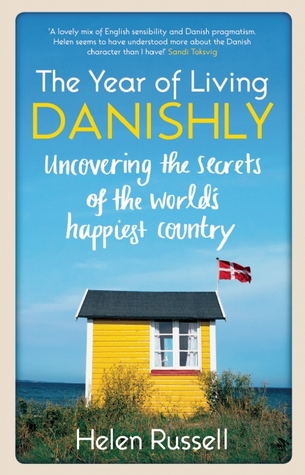 A Year of Living Danishly, by Helen Russell
A Year of Living Danishly, by Helen Russell
When her husband gets a job at the Lego offices in Jutland, Helen Russell decides to head to Denmark with him, freelance write, and try to figure out why the Danes are so happy. From childcare, education, food, and interior design to taxes, sexism, and everything in between (turns out the Danes love to burn witches), Helen s funny, poignant story kept me enthralled from start to finish. It s informative, hilarious, self-deprecating, and tells a great story of someone trying to fit in. As someone who loves Denmark, has lots of Danish friends, and thinks Copenhagen is one of the best cities in the world, I couldn t put this down.
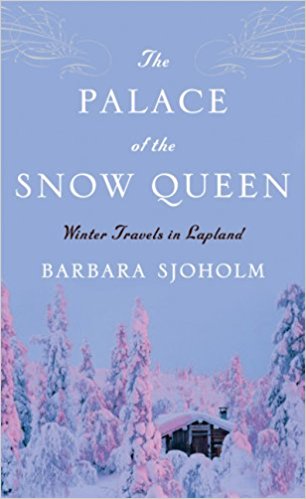 The Palace of the Snow Queen: Winter Travels in Lapland, by Barbara Sjoholm
The Palace of the Snow Queen: Winter Travels in Lapland, by Barbara Sjoholm
Barbara Sjoholm set off one winter to explore this arctic region — then spent two more coming back and learning about it more. In the process, she unearths the region’s rich history and dives into the tension between tourism, mining, and land use. Her book dives deep into the Samis, local indigenous population and their struggle to maintain their culture in the modern era. As a lover of all things Scandinavian, it was really nice to read about an area and people of the region not often given the attention they deserve. As much as I thought I knew about this region, reading this book taught me a lot – and showed me how much I still had to learn. Well written and insightful, you should definitely pick up this book.
 Backpacking With Dracula, by Leif Pettersen
Backpacking With Dracula, by Leif Pettersen
Part travelogue, part history book, and part practical guide to Romania, this book recounts my friend Leif Pettersen s travels through the country during his time as a guidebook writer for Lonely Planet. As someone who also loves Romania (it is such an underrated country. I don’t understand why more people don’t go!), I found his witty and funny retelling of Romanian history compelling and enjoyed all the travel tales he wove in between. I’m not sure some of practical tips still hold true but Pettersen’s book was a witty, funny, and good light read that will give a very good overview of the country!
 A Year in Provence, by Peter Mayle
A Year in Provence, by Peter Mayle
I d heard of this book before but never bothered to pick it up until multiple readers recommended it to me. I m glad I finally read it — it was incredible. An autobiographical novel following the author Peter Mayle s year living in Provence, it details the struggles and joys of adapting to a new culture. I loved the interesting characters he meets and his description of the slow pace of life in France (which was a clear departure from his previous life in England). As a Francophile, this book makes me want to move to France even more. Wonderfully and wistfully written, I can understand why it continues to be such a classic.
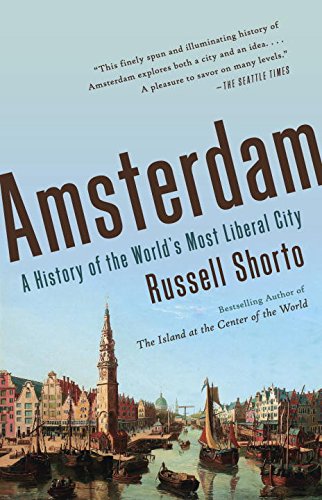 Amsterdam, by Russell Shorto
Amsterdam, by Russell Shorto
Written by Russell Shorto, one of my favorite writers, this book covers one of my favorite cities in the world. Shorto moved to Amsterdam with his wife and children and — as he did in his book on Manhattan — has written a phenomenal tale of the city s history, starting from its founding until modern times. I ve read a lot of books about Amsterdam, and this book is by far one of the best, providing a wonderful overview of the city and its culture as told through the stories of its famous and not-so-famous residents.
 Almost French: Love and a New Life in Paris, by Sarah Turnbull
Almost French: Love and a New Life in Paris, by Sarah Turnbull
Sarah Turnbull s visit to the City of Light was supposed to last a week, but she ends up staying permanently with the guy she had traveled to Paris to visit (Paris has that effect on people). This book follows Turnbull s life in the city as she navigates the highs and lows of trying to fit into a foreign culture while slowly falling more and more in love with it. Its a fish-out-of-water tale and cliched at many times, but it offers lessons on embracing life in a foreign culture that will never really accept you as one of its own. Funny and witty, I found it to be a fun page turner.
Europe Travel Guide: Related Articles
Want more tips for your trip? Check out all the articles I ve written on Europe travel and continue planning your trip:
